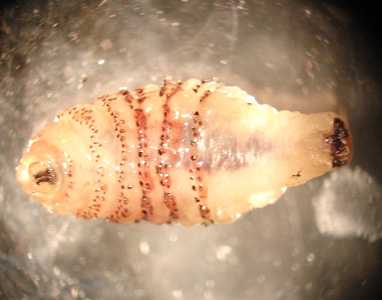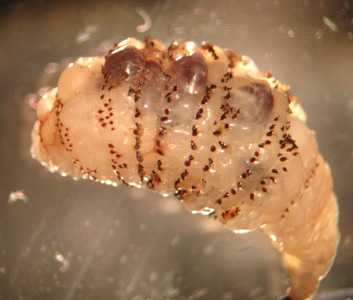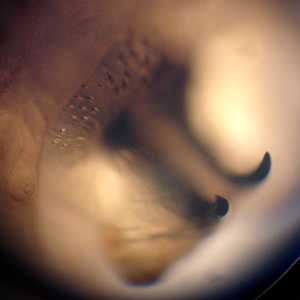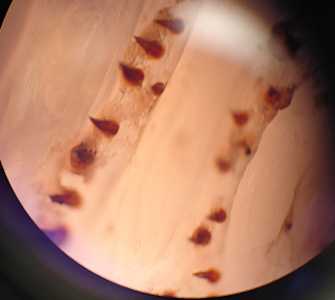
Case #316 - February, 2012
A 75-year-old man developed a lesion on his right forearm. The lesion developed approximately one month after returning from a trip to Costa Rica. The patient's attending physician removed what appeared to be a fly larva. The larva was sent to the hospital's Microbiology Department for further identification. Figure A and B show the ventral and lateral sides of the larva, respectively. Figure C shows a close-up of the mouthparts. Figure D shows a close-up of the cuticular spines. What is your identification? Based on what criteria?

Figure A

Figure B

Figure C

Figure D
Case Answer
This was a case of myiasis caused by Dermatobia hominis. Diagnostic criteria included:
- body shape (thicker anterior two-thirds, suddenly tapering to posterior end).
- cuticular spines not present on every body segment.
- travel to Central America.
More on: Myiasis
This case and images were kindly provided by HealthEast St. Joseph’s Hospital, St. Paul, MN.
Images presented in the monthly case studies are from specimens submitted for diagnosis or archiving. On rare occasions, clinical histories given may be partly fictitious.
DPDx is an education resource designed for health professionals and laboratory scientists. For an overview including prevention and control visit www.cdc.gov/parasites/.
- Page last reviewed: August 24, 2016
- Page last updated: August 24, 2016
- Content source:
- Global Health – Division of Parasitic Diseases and Malaria
- Notice: Linking to a non-federal site does not constitute an endorsement by HHS, CDC or any of its employees of the sponsors or the information and products presented on the site.
- Maintained By:


 ShareCompartir
ShareCompartir